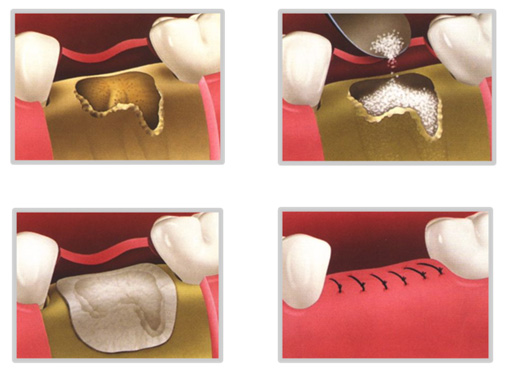Bone grafting is a surgical procedure that completes the missing bone with a special material in order to maintain the alveolar process. The material not only complements the missing bone but also helps the body to rebuild lost bone.
The goal of this surgery is to coax the body into rebuilding the bone and other structures that attach a tooth to the jaw. It is done by a periodontist, a dentist who specializes in diagnosing and treating gum disease.
First, the periodontist will separate the gums from your teeth to gain access to the roots and bone. The roots will be thoroughly cleaned. The holes (defects) in the bone will be filled in with a graft material. Then they will be covered with a physical barrier.
Bone grafting materials commonly used include bits of:
Barriers are used to cover the grafting material in the early stages of healing. They also prevent the gums from growing into the bony defect. Barriers are made from human skin, cow skin or synthetic materials. After the graft is in place, the gums will be put back over the treated site and stitched into place. The site also may be covered with a bandage known as a periodontal pack or dressing. During the next six to nine months, your body fills in the area with new bone and soft tissue. In effect, this reattaches the tooth to your jaw.
